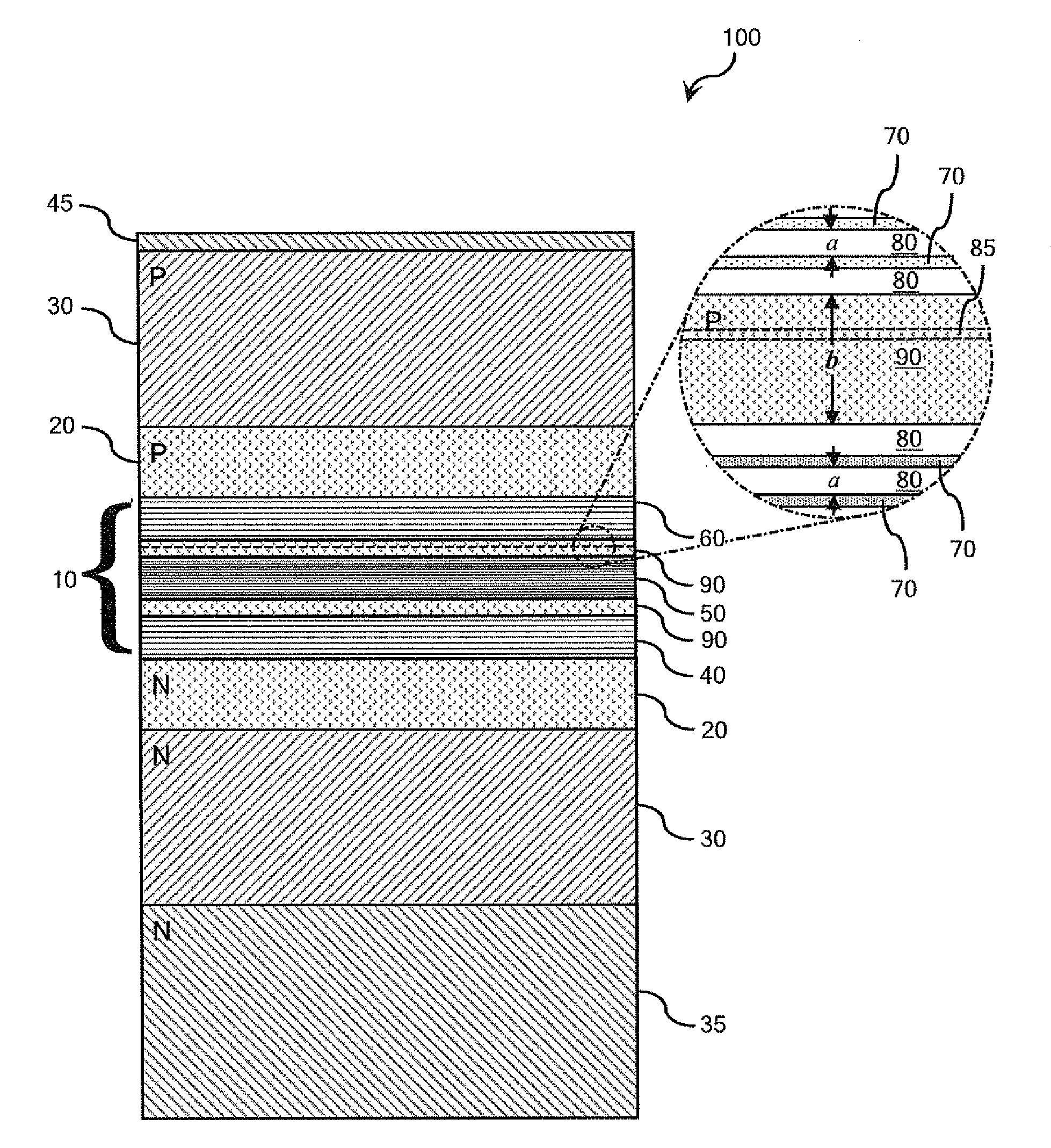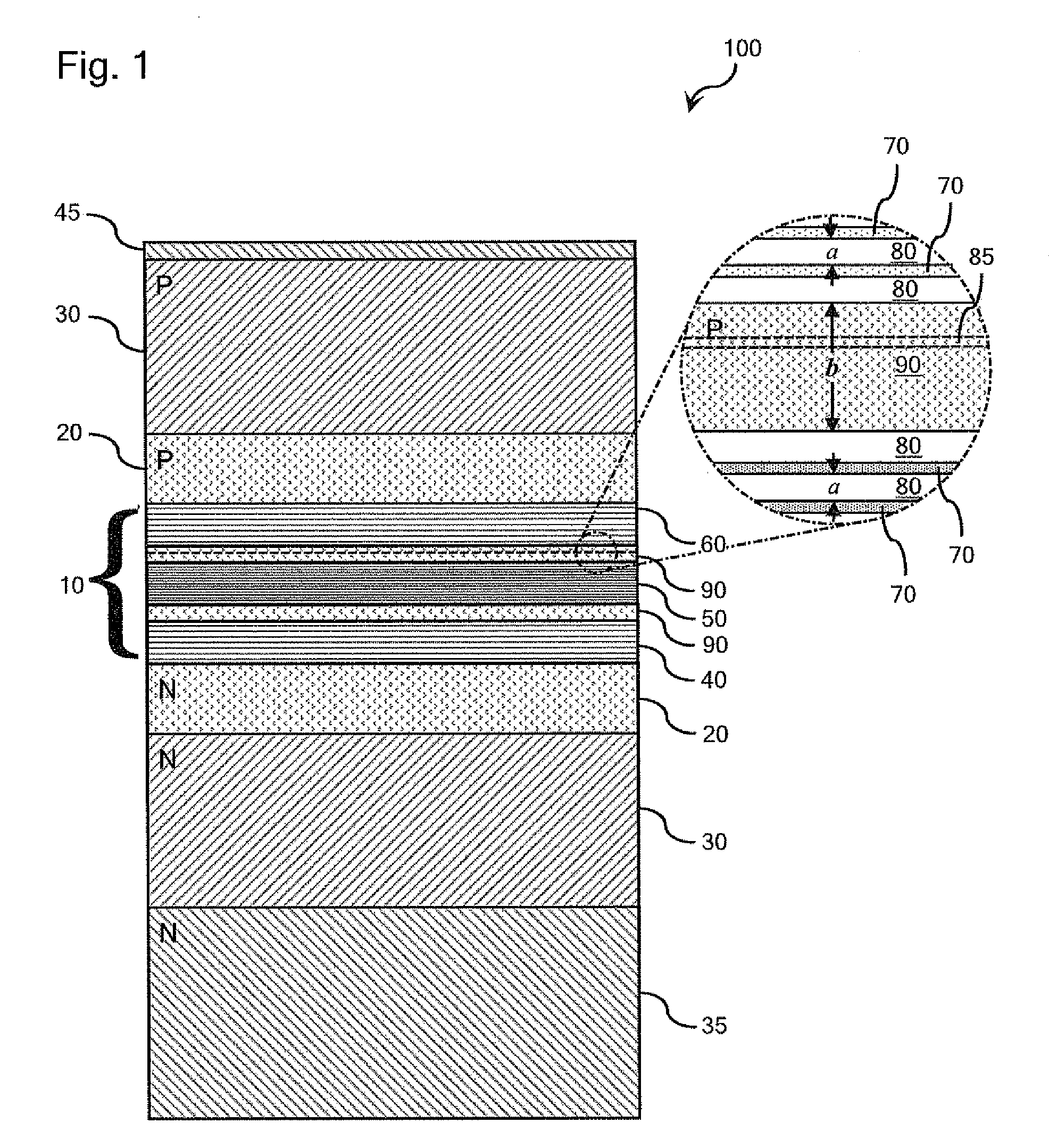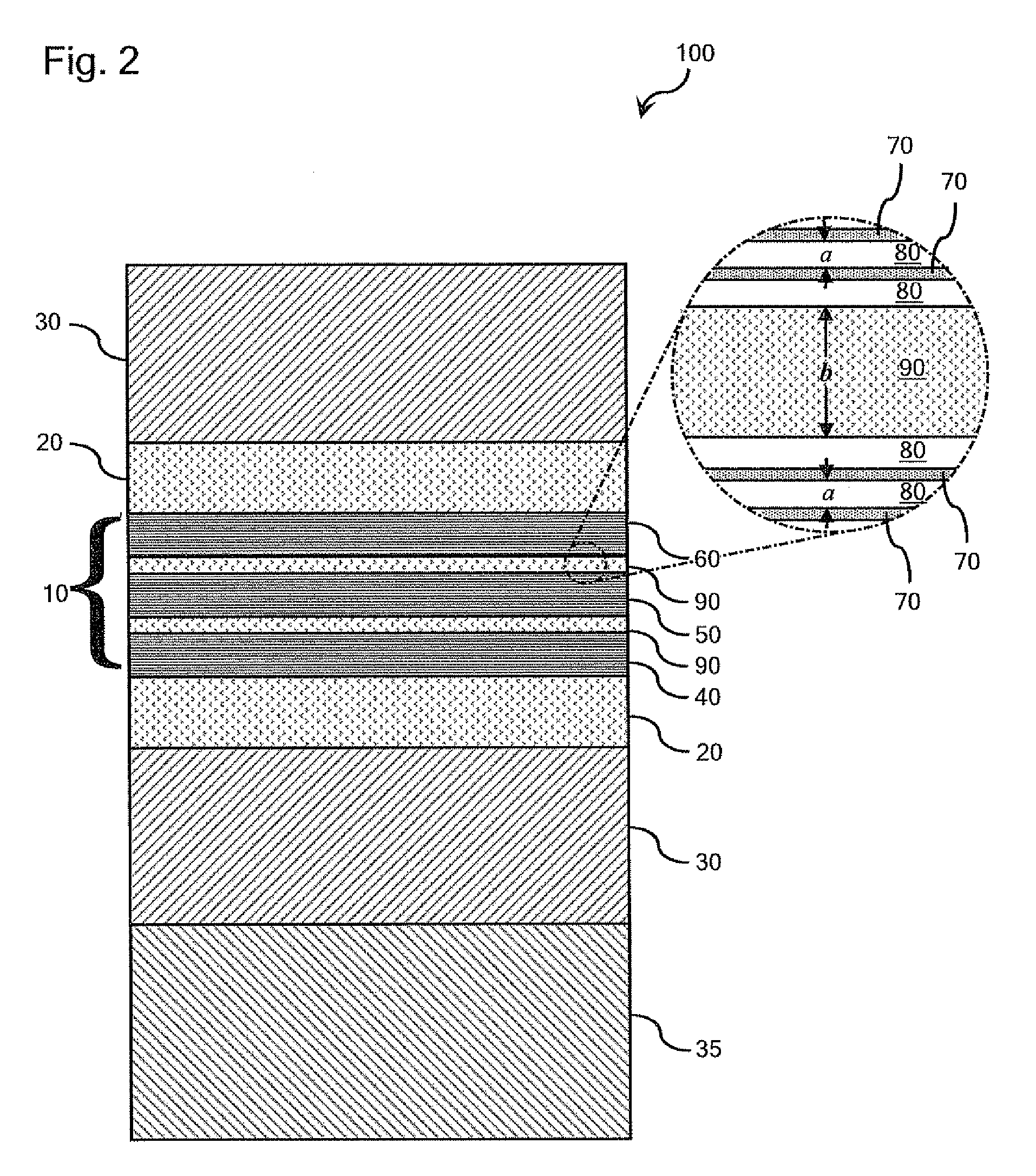MQW Laser Structure Comprising Plural MQW Regions
a laser structure and mqw technology, applied in lasers, semiconductor lasers, laser details, etc., can solve the problems of difficult to grow an ingan heterostructure that has a sufficient content, significant design constraints on the laser, and cladding layer refractive index, and achieve the effect of promoting the propagation of emitted photons
- Summary
- Abstract
- Description
- Claims
- Application Information
AI Technical Summary
Benefits of technology
Problems solved by technology
Method used
Image
Examples
Embodiment Construction
[0014]The multi-quantum well (MQW) laser structures 100 illustrated in FIGS. 1 and 2, comprise a semiconductor active region 10, a waveguide region comprising a pair of waveguide layers 20 disposed on opposite sides of the active region 10, and a cladding region comprising a pair of cladding layers 30 disposed on opposite sides of the waveguide region. The respective active, waveguide, and cladding regions are formed as a multi-layered structure over a laser substrate 35 such that the waveguide layers 20 of the waveguide region guide the stimulated emission of photons from the active region 10, and the cladding layers 30 of the cladding region promote propagation of the emitted photons in the waveguide region.
[0015]The active region 10 comprises a plurality of MQW regions 40, 50, 60, at least one of which is configured for stimulated emission of photons. The MQW regions 40, 50, 60 enhance optical confinement without introducing optical loss by providing a refractive index that is as...
PUM
 Login to View More
Login to View More Abstract
Description
Claims
Application Information
 Login to View More
Login to View More - R&D
- Intellectual Property
- Life Sciences
- Materials
- Tech Scout
- Unparalleled Data Quality
- Higher Quality Content
- 60% Fewer Hallucinations
Browse by: Latest US Patents, China's latest patents, Technical Efficacy Thesaurus, Application Domain, Technology Topic, Popular Technical Reports.
© 2025 PatSnap. All rights reserved.Legal|Privacy policy|Modern Slavery Act Transparency Statement|Sitemap|About US| Contact US: help@patsnap.com



